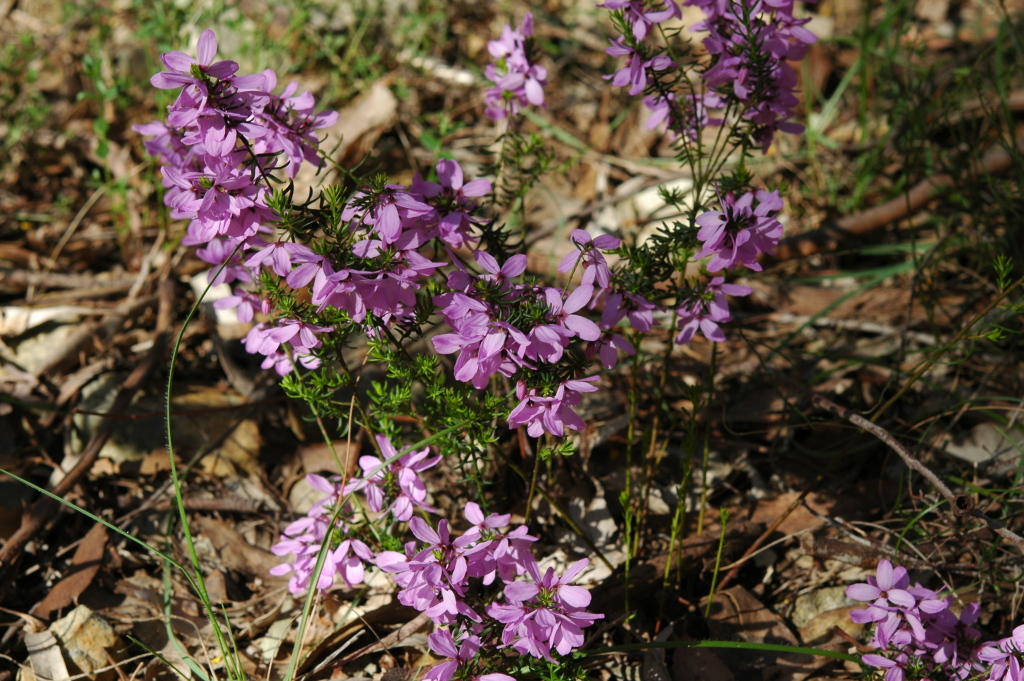Tetratheca pilosa subsp. pilosa
Erect, spreading or procumbent shrub with branches to c. 60 cm long; stems with fine, white, erect or retrorse hairs, often with larger tubercle-based setae to c. 1.5 mm long, glandular hairs sometimes also present on new growth. Leaves mostly alternate, linear to narrowly ovate, 2–15 mm long, mostly less than 1.5 mm wide, apex usually acute, incurved, margins tightly revolute, both surfaces usually with a few setae to c. 1.5 mm long, particularly on veins and margins. Inflorescences 1- or rarely 2-flowered; peduncles elongating, 4–10 mm long in mature flowers, glabrous or hairy. Sepals ovate to broad-ovate, 1–2.5 mm long, deciduous; petals obovate to ovate, 3–12 mm long, deep lilac-pink, pale pink or white, deciduous; ovary glabrous or pubescent with usually short and gland-tipped hairs; ovules 2. Fruit obovate to cuneate or cordate, 3–4.5 mm long; seeds more or less oblong, c. 3 mm long. Flowers Sep.–Nov.
Wim, GleP, VVP, GipP, Gold, CVU, GGr, DunT, EGL, WPro, HSF. Also SA, NSW, Tas. Scattered mainly in western Victoria in heathland and open-forest.
This and subsp. latifolia occupy generally distinct geographical areas in Victoria, with no report of their being sympatric anywhere unlike in Tasmania where their ranges overlap and some intermediates have been observed.
Jeanes, J.A. (1999). Tremandraceae. In: Walsh, N.G.; Entwisle, T.J., Flora of Victoria Vol. 4, Cornaceae to Asteraceae, pp. 124–129. Inkata Press, Melbourne.
 Spinning
Spinning